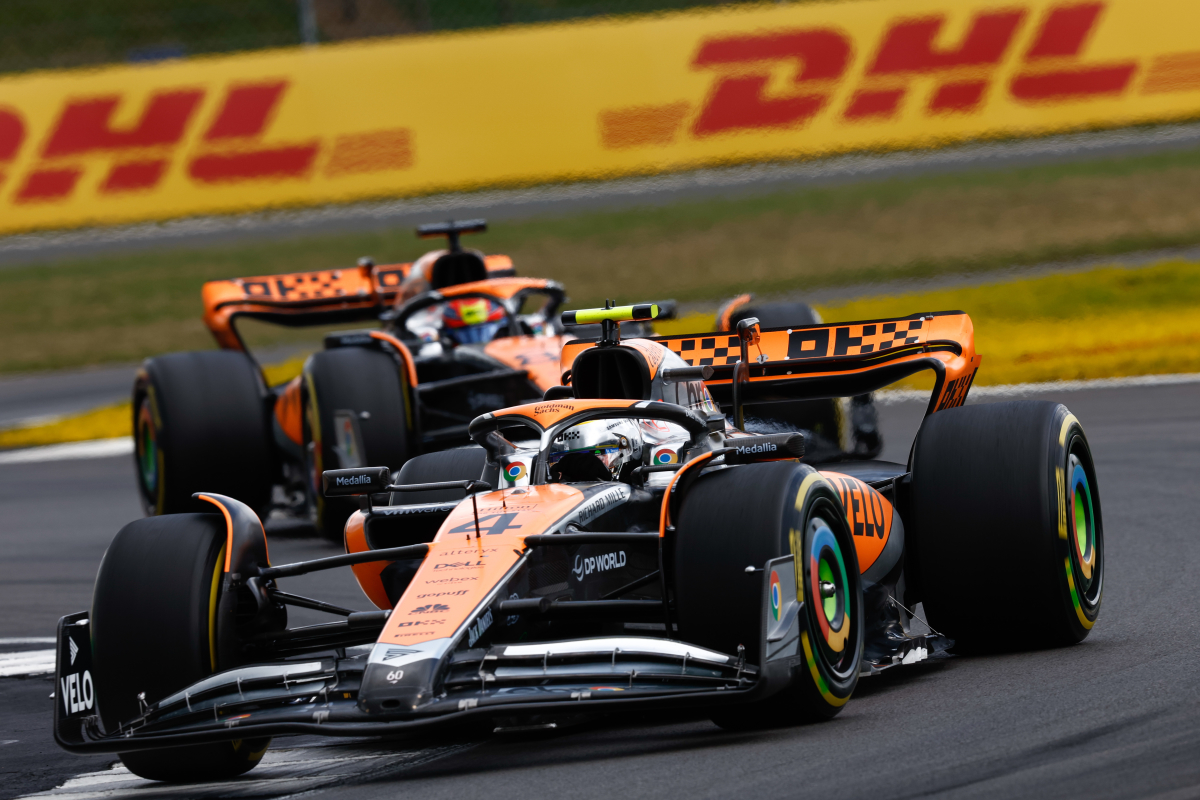
F1 expert reveals REAL McLaren pace and if they can sustain chief charge on Red Bull
F1 expert reveals REAL McLaren pace and if they can sustain chief charge on Red Bull

The British GP saw two British drivers on the podium for the first time in 23 years in the form of Lewis Hamilton and Lando Norris, the latter in the resurgent McLaren.
While Max Verstappen drove a faultless weekend, the real action on track was all behind him with the papaya-chrome team making a big step in performance with the recent haul of aero upgrades brought onto the car.
Lando Norris and Oscar Piastri qualified P2 and P3 and finished P2 and P4 respectively, completely on merit. In this article, let us deep dive into the real pace of the McLaren and the strengths and weaknesses of the updated MCL60, with the most burning question of this week, is their pace sustainable for the rest of the season?
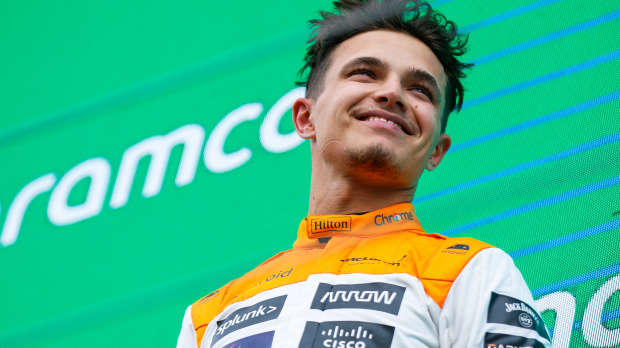
Qualifying - comparing Red Bull, Ferrari, Mercedes and McLaren
To much surprise, the McLaren was not the second fastest car in high-speed corners. It was actually Charles Leclerc's Ferrari, who was up on Lando Norris by 0.1 sec until T15. Leclerc went too hot into T15 and couldn’t carry the speed through it, which compromised his exit and then made a similar mistake in T16-17 which resulted in him requiring to make a correction at the exit of T17, as he lost 0.3sec in three turns putting him behind Norris and Piastri on the grid.
So considering Leclerc did not make those mistakes, chances are he would have been starting P2. But the good news is they looked faster in high speed as compared to both Mercedes and Aston Martin.
Another clear weakness of the car is on the straights, compared to Ferrari and Red Bull. With Ferrari having brought a new single-element beam wing with a neutral secondary element, they have taken a big step to match Red Bull’s top speed. When it comes to top speed the McLaren are even slower than both Mercedes and Aston Martin. So they might struggle in Spa and Monza, which are top speed-sensitive circuits.
However, when it came to the medium-speed corners Red Bull were a step ahead of everyone and pulled most of their performance advantage in the last two turns of the track. This is probably because they can run more downforce for iso drag as compared to other cars. McLaren however were the second fastest across the medium-speed corners.
READ MORE: Mercedes chief admits F1 strategy choice that DAMAGED driver's race
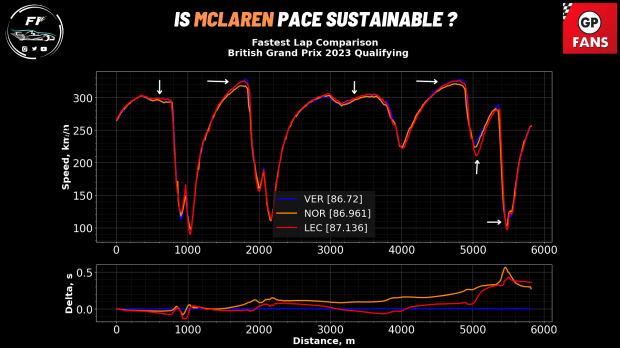
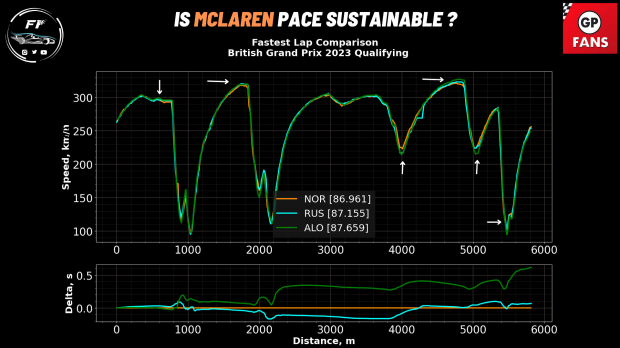
Race pace comparison
Looking at the race data, Verstappen would consistently make up 0.2 - 0.3 sec on Norris at T3-4-5, T6-7, T16-17, which are the medium speed turns with the rest of the lap being quite even between them in the race. The tyre wear was also similar for both of them.
However, Norris was the second fastest in the medium speed and high-speed corners in the race and likewise gained 0.1-0.3 sec on average over the Ferrari, Mercedes and Aston Martin.
Norris, even after opting for a less draggy rear wing could not match the top speeds of the Ferrari and Red Bull, however, they were even with Mercedes which allowed them to hold off Hamilton at the end of the race.
The plot below shows the data for a representative lap during the race which provides evidence to the comments above.
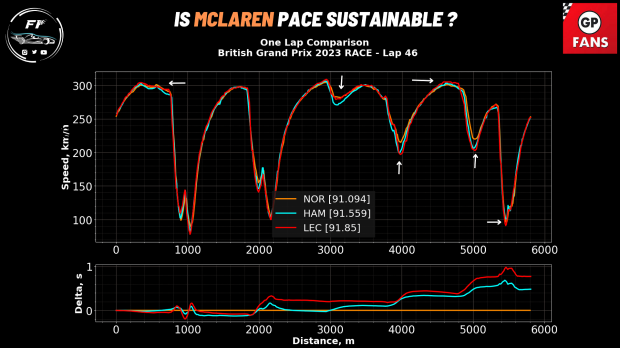
So what’s next?
McLaren say that they have more upgrades for the Hungarian GP which would add about 0.1 - 0.25 sec on the car. Looking at the current weaknesses, I’d expect a new beam wing - rear wing combo to take care of their top speed weaknesses ahead of the Belgium and Italian GP. The Hungarian GP would also prove a good testing ground to understand how the McLaren behaves in slow-speed sections.It’s not a given that the McLaren is the second fastest car on the grid right now even after their impressive performance at the British GP. There were many silent factors that played in their favour during the weekend which elevated their performance. Some of these factors were
Tyre compounds and warm up
Pirelli brought the hardest set of tyre compounds for the British GP. McLaren has had a history of struggling in the races, so it will be interesting to see how they perform with the C4 and C5 compounds that Pirelli will bring to Hungary.
Track position and strategy
A good qualifying, a great start and some good teamwork meant that McLarens were able to build a gap to the rest of the field while Leclerc defended from Russell on the softs. In reality, they all had very similar race pace in free air. Additionally, strategy played a significant role in Sunday’s outcome. Ferrari as they are famously known, did make a blunder of it after all.
Where can you expect McLaren to be faster?
The Hungarian GP will be a good testing ground for the slow-speed performance of the car and especially for understanding their race pace on softer compound tyres. However, without an update on the rear wing and the beam wing, we can expect McLaren not to be the second fastest around Monza and Spa.
Shubham Sangodkar is a former F1 Aerodynamicist with a Master's in Racing Car Design specialising in F1 Aerodynamics and F1 Data Analysis. He also posts aerodynamics content on his YouTube channel, which can be found here.
READ MORE: Horner warns FIA rule proposals could blow GOLDEN opportunity for F1
Related
Change your timezone:
Latest News

Ricciardo makes five-race admission in bid to survive F1 axe
- 27 minutes ago

Red Bull is 'burning' after Horner and Marko display
- 1 hour ago

Red Bull announce strong statement over Newey departure claims
- 2 hours ago

Verstappen 'to meet Mercedes over SHOCK 2025 move as Red Bull exit clause revealed'
- 3 hours ago

F1 champion reveals £100 MILLION contract to keep racing
- Today 17:57

F1 News Today: Newey 'property hunt' reveals Red Bull exit clues as Hamilton hints at Ferrari swoop
- Today 17:35
Related news

McLaren leading fight for HUGE cash injection

Young F1 star set to make McLaren debut in injury replacement

F1 star reveals how Verstappen and Hamilton rivalry influenced key decision

Norris reveals CRUCIAL save that kept him at McLaren
F1 Standings

Drivers
- Oliver Bearman
- Charles Leclerc
- Carlos Sainz
- Lando Norris
- Oscar Piastri
- Pierre Gasly
- Esteban Ocon
- Sergio Pérez
- Max Verstappen
- Alexander Albon
- Logan Sargeant
- Lewis Hamilton
- George Russell
- Nico Hülkenberg
- Kevin Magnussen
- Fernando Alonso
- Lance Stroll
- Valtteri Bottas
- Zhou Guanyu
- Daniel Ricciardo
- Yuki Tsunoda
Races
-
 Gulf Air Grand Prix of Bahrain 2024
Gulf Air Grand Prix of Bahrain 2024
-
 Saudi Arabian Grand Prix 2024
Saudi Arabian Grand Prix 2024
-
 Grand Prix of Australia 2024
Grand Prix of Australia 2024
-
 MSC Cruises Grand Prix of Japan 2024
MSC Cruises Grand Prix of Japan 2024
-
 Grand Prix of China 2024
Grand Prix of China 2024
-
 Miami Grand Prix 2024
Miami Grand Prix 2024
-
 Gran Premio dell'Emilia Romagna 2024
Gran Premio dell'Emilia Romagna 2024
-
 Grand Prix of Monaco 2024
Grand Prix of Monaco 2024
-
 Grand Prix du Canada 2024
Grand Prix du Canada 2024
-
 Gran Premio de España 2024
Gran Premio de España 2024
-
 Grand Prix of Austria 2024
Grand Prix of Austria 2024
-
 Grand Prix of Great Britain 2024
Grand Prix of Great Britain 2024
-
 Grand Prix of Hungary 2024
Grand Prix of Hungary 2024
-
 Grand Prix of Belgium 2024
Grand Prix of Belgium 2024
-
 Heineken Dutch Grand Prix 2024
Heineken Dutch Grand Prix 2024
-
 Grand Prix of Italy 2024
Grand Prix of Italy 2024
-
 Grand Prix of Azerbaijan 2024
Grand Prix of Azerbaijan 2024
-
 Grand Prix of Singapore 2024
Grand Prix of Singapore 2024
-
 Grand Prix of the United States 2024
Grand Prix of the United States 2024
-
 Gran Premio de la Ciudad de Mexico 2024
Gran Premio de la Ciudad de Mexico 2024
-
 Grande Prêmio de São Paulo 2024
Grande Prêmio de São Paulo 2024
-
 Heineken Silver Las Vegas Grand Prix 2024
Heineken Silver Las Vegas Grand Prix 2024
-
 Qatar Grand Prix 2024
Qatar Grand Prix 2024
-
 Grand Prix of Abu Dhabi 2024
Grand Prix of Abu Dhabi 2024
About GPFans
GPFans is a multi-platform, multi-language brand dedicated to Formula One coverage. We bring you all the ins and outs of the sport, 24/7, everything from up-to-the-minute news and features to the latest viral stories and clips.We believe that a new generation of exciting, outspoken drivers will make F1 more popular than ever before, and we want to give our users access to as much of their heroes as possible, on and off the track. From Lewis Hamilton to Max Verstappen, Daniel Ricciardo to Sebastian Vettel, we provide in-depth analysis of every every Grand Prix in the season, from Australia to Abu Dhabi.
With Formula One under the new ownership of Liberty Media, how the sport is being covered is evolving, and GPFans will look to be at the heart of this progression into new media, as one of the fastest-growing sites covering the king of motorsports.
Follow us on your favorite social media channel
Corporate & Media
 Innovatieweg 20C
Innovatieweg 20C7007 CD, Doetinchem, Netherlands
+31645516860


















 Gulf Air Grand Prix of Bahrain 2024
Gulf Air Grand Prix of Bahrain 2024  Saudi Arabian Grand Prix 2024
Saudi Arabian Grand Prix 2024  Grand Prix of Australia 2024
Grand Prix of Australia 2024  MSC Cruises Grand Prix of Japan 2024
MSC Cruises Grand Prix of Japan 2024  Grand Prix of China 2024
Grand Prix of China 2024  Gran Premio dell'Emilia Romagna 2024
Gran Premio dell'Emilia Romagna 2024  Grand Prix of Monaco 2024
Grand Prix of Monaco 2024  Grand Prix du Canada 2024
Grand Prix du Canada 2024  Gran Premio de España 2024
Gran Premio de España 2024  Grand Prix of Austria 2024
Grand Prix of Austria 2024  Grand Prix of Hungary 2024
Grand Prix of Hungary 2024  Grand Prix of Belgium 2024
Grand Prix of Belgium 2024  Grand Prix of Azerbaijan 2024
Grand Prix of Azerbaijan 2024  Grand Prix of Singapore 2024
Grand Prix of Singapore 2024  Gran Premio de la Ciudad de Mexico 2024
Gran Premio de la Ciudad de Mexico 2024  Grande Prêmio de São Paulo 2024
Grande Prêmio de São Paulo 2024  Qatar Grand Prix 2024
Qatar Grand Prix 2024  Grand Prix of Abu Dhabi 2024
Grand Prix of Abu Dhabi 2024